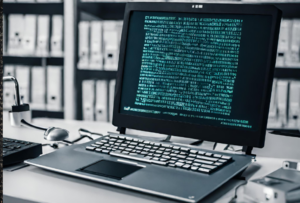Ransomware can severely impact your business if you are not prepared. In recent months, a ransomware attack forced a group of 30 hospitals to divert patients from emergency rooms to other hospitals, while another forced a large financial institution to suspend many services.
Ransomware is a type of malicious software that after infecting a system will encrypt files, rendering them and the systems they rely on unusable. Malicious actors then demand ransom in exchange for a decryption key that can unlock the files. Ransomware actors often target and threaten to sell or leak sensitive data or authentication information if the ransom is not paid. As the earlier examples show, ransomware can damage your business, your customers, and the reputation of your organization.
Seriousness of Ransomware
Ransomware attacks are widespread, with nearly half a billion attacks occurring in 2022 alone (Statista, 2023). The average downtime incurred from a ransomware attack was 22 days (Statista, 2022), highly disruptive and costly for most any organization. No matter the size of your organization, it’s critical to dedicate enough resources to be prepared for these attacks and defend your infrastructure and assets.
How Ransomware Works
Here’s a real-world example of how ransomware works, from the National Institute of Standards and Technology:
- A user is tricked into clicking on a malicious link that downloads a file from an external website.
- The user executes the file, not knowing that the file is ransomware.
- The ransomware takes advantage of vulnerabilities in the user’s computer and other computers to propagate throughout the organization.
- The ransomware simultaneously encrypts files on all the computers, then displays messages on their screens demanding payment in exchange for decrypting the files.
Four Steps You Can Take to be Prepared for Ransomware Attacks
- Maintain a suitable backup. Failure to implement adequate backup measures is a key reason why some ransomware attacks are successful. Ensure that your security professional maintains an appropriate schedule of backups, lessening the gap between contamination and discovery.
- Assess your security program. A maturity assessment of your security program using recognized standards such as the NIST Cybersecurity Framework or ISO 27001 can identify areas where your security program is performing well, and where improvements are needed. Following up your assessment with a multiple-year project roadmap can help guide your program forward, close gaps, reduce risk, and increase your cyber resilience.
- Ensure all systems are fully patched. Failure to patch hardware and software leaves systems vulnerable. When your system is patched you can utilize updated features, fix bugs, and stay secure.
- Implement security awareness training. Ransomware attacks are often initiated through phishing or social engineering. Implementing a security awareness training program can strengthen what can be the weakest part of your security by teaching employees to recognize possible ransomware attacks. Training employees is the most underspent sector in the cybersecurity industry, yet it holds some of the most promise as a defense against attacks.
How Tangible Security Can Help
How well can your team detect, prevent, and recover from today’s advanced security threats like ransomware? For over 25 years, security-minded organizations have trusted Tangible Security with protecting their sensitive assets. We offer a full range of services from penetration testing and risk assessments to staff training, compliance assessments, and staff augmentation such as fractional CISOs that will ensure that security in your organization becomes tangible.
Our services to prevent threats like ransomware include:
- Security program assessment. Our security program assessment is a holistic measurement of the maturity of your security program against industry standards and delivers actionable recommendations that will improve your security posture, close any gaps, reduce risk, and increase your cyber resilience. This includes evaluating people, processes, and technology.
- Security awareness training. Security awareness training provides you with targeted educational programs to raise awareness among employees about cybersecurity risks and best practices. Our training sessions cover a wide range of topics, including phishing attacks, social engineering, password hygiene, data protection, and incident reporting.
- Incident response and digital forensics. Our incident response and digital forensics services provide you with expert assistance in handling and investigating security incidents. Our team of experienced professionals offers swift and efficient incident response to minimize the impact of breaches, malware infections, and other cyber threats.
Tangible Security is ready to provide expert, tailored, and personable cybersecurity consultation. For more information on how we can help your business, Contact us today.



Recent Comments